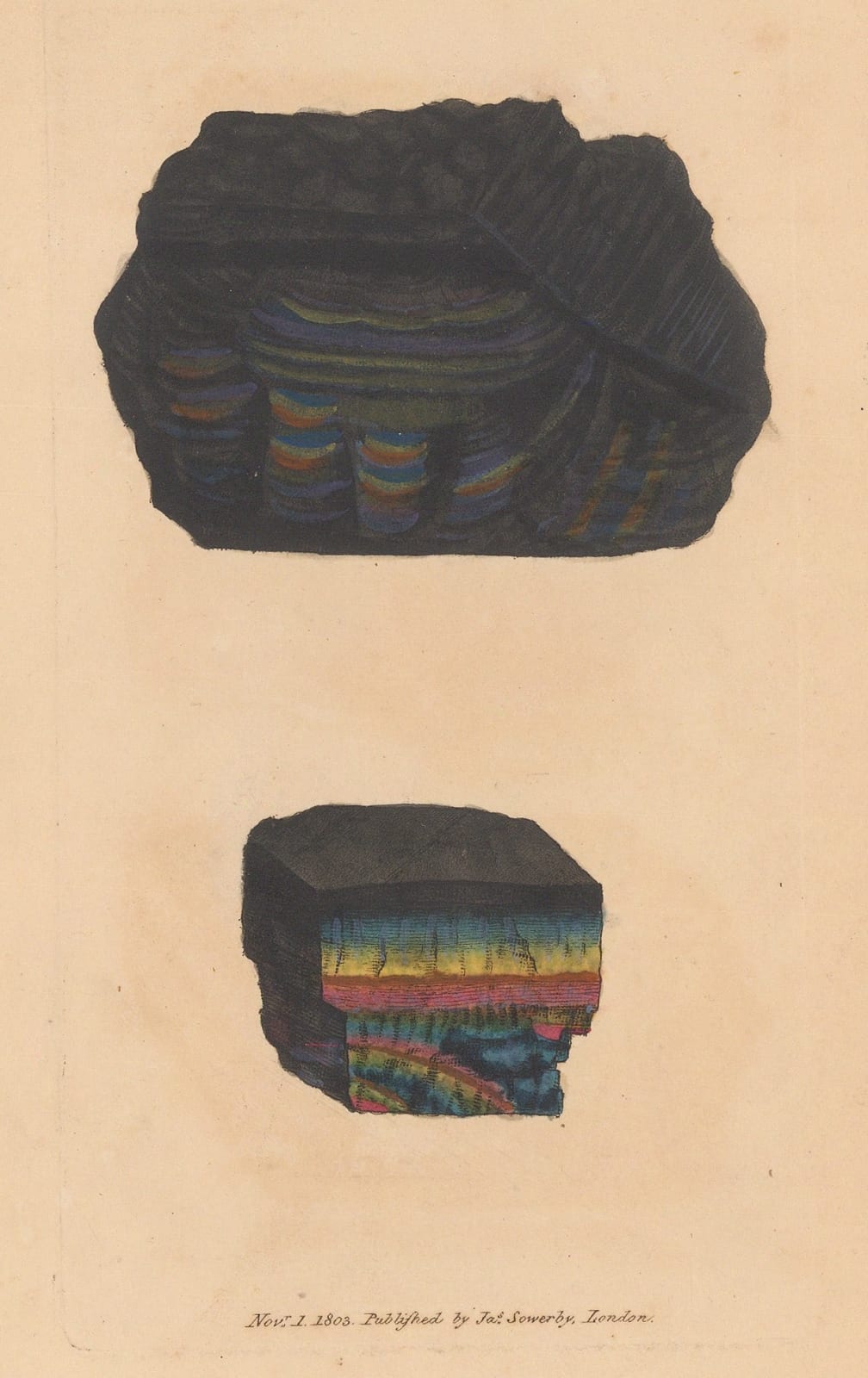James Sowerby
Geology - Oxygenized Carbon, 1804
An original hand-coloured antique copper-engraving
7 ½ x 4 ½ in
19 x 11 cm
19 x 11 cm
SCIp96
Geology: Carbo oxygenizatus. Oxygenized Carbon from Denbigh. James Sowerby, son of a lapidary (stone cutter, polisher and engraver), studied at the Royal Academy were he learned to paint miniatures and...
Geology: Carbo oxygenizatus. Oxygenized Carbon from Denbigh.
James Sowerby, son of a lapidary (stone cutter, polisher and engraver), studied at the Royal Academy were he learned to paint miniatures and portraits. In order to make his backgrounds more realistic, Sowerby also studied botany and soon became an expert illustrator of plants, publishing his 36 volume English Botany from 1790-1813. From the late 18th to the late 19th century, the Sowerby family of collectors, naturalists, artist and publishers would have an immense impact on the study and dissemination of natural history knowledge in Great Britain.
From 1802, Sowerby began to issue by subscription his British Mineralogy, the most ambitious work on minerals ever produced. Each plate was meticulously drawn from specimens in Sowerby's personal mineralogical collection from British mines extracting some of the most richly mineralised deposits yet discovered. Sowerby issued the work in 78 parts with assistance from his sons George and James. Each plate was carefully engraved, and then richly hand-coloured with individual subscribers binding up their own collections. There were also a limited number of complete sets published in around 1818.
British Mineralogy quickly became an influential source of information at a time when the study of geology and mineralogy was extremely fashionable. To this day it has not been supersede
James Sowerby, son of a lapidary (stone cutter, polisher and engraver), studied at the Royal Academy were he learned to paint miniatures and portraits. In order to make his backgrounds more realistic, Sowerby also studied botany and soon became an expert illustrator of plants, publishing his 36 volume English Botany from 1790-1813. From the late 18th to the late 19th century, the Sowerby family of collectors, naturalists, artist and publishers would have an immense impact on the study and dissemination of natural history knowledge in Great Britain.
From 1802, Sowerby began to issue by subscription his British Mineralogy, the most ambitious work on minerals ever produced. Each plate was meticulously drawn from specimens in Sowerby's personal mineralogical collection from British mines extracting some of the most richly mineralised deposits yet discovered. Sowerby issued the work in 78 parts with assistance from his sons George and James. Each plate was carefully engraved, and then richly hand-coloured with individual subscribers binding up their own collections. There were also a limited number of complete sets published in around 1818.
British Mineralogy quickly became an influential source of information at a time when the study of geology and mineralogy was extremely fashionable. To this day it has not been supersede
Join our mailing list
* denotes required fields
We will process the personal data you have supplied to communicate with you in accordance with our Privacy Policy. You can unsubscribe or change your preferences at any time by clicking the link in our emails.


